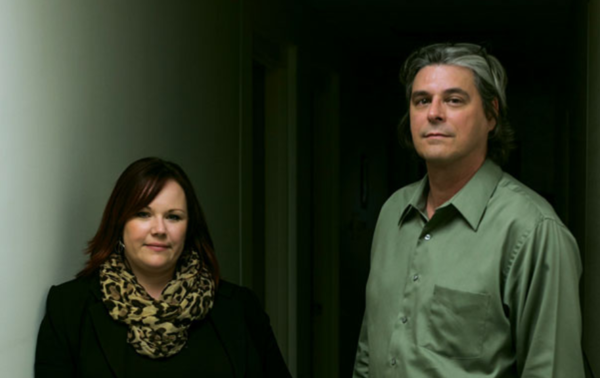The scourge of addiction to painkillers, heroin, and fentanyl sweeping the country has produced a flood of bewildered children who, having lost their parents to drug use or overdose, are now living with foster families or relatives. In Ashtabula County, in Ohio's northeast corner, the number of children in court custody quadrupled from 69 in 2014 to 279 last year. "I can't remember the last time I removed a kid and it didn't have to do with drugs," says Mongenel, a quick-witted redhead. Her clients range from preschoolers who know to call 911 when a parent overdoses to steely teenagers who cook and clean while Mom and Dad spend all day in the bathroom. Often, the kids marvel at how quickly everything changed - how a loving mom could transform, as one teenager put it, into a "zombie."
The pattern mirrors a national trend: Largely because of the opioid epidemic, there were 30,000 more children in foster care in 2015 than there were in 2012 - an 8 percent increase. In 14 states, from New Hampshire to North Dakota, the number of foster kids rose by more than a quarter between 2011 and 2015, according to data amassed by the Annie E. Casey Foundation. In Texas, Florida, Oregon, and elsewhere, kids have been forced to sleep in state buildings because there were no foster homes available, says advocacy group Children's Rights. Federal child welfare money has been dwindling for years, leaving state and local funding to fill in the gaps. But Ashtabula County is one of the poorest counties in Ohio, and despite a recent boost in funding, the state contributes the lowest share toward children's services of any state in the country.
There's the immediate trauma of living with an unstable parent or being taken from family and sometimes from school and friends. But there's also the long-term impact. Dozens of studies have found that kids who undergo traumatic events early in life are more likely to suffer mental and physical repercussions later on, be it substance abuse, depression, heart disease, or cancer. Among the 10 so-called Adverse Childhood Experiences, or ACEs, are emotional abuse, physical abuse, separation from parents, and parental substance abuse.
"Every time a child gets into a scary or dangerous situation, it activates their stress response," explains Dr. Nadine Burke Harris, a pediatrician and founder of the Center for Youth Wellness, which focuses on the developmental effects of childhood trauma. "The repeated activation of their stress response is what leads to the biological condition that we in pediatrics are now calling toxic stress." Looking at the brains of kids of drug users, Burke Harris says, one would expect to see the signs associated with other types of trauma: an enlarged amygdala, the brain's fear center; decreased functioning of the nucleus accumbens, the brain's pleasure and rewards center; and less activity in the prefrontal cortex, which oversees a child's ability to control impulses and pay attention.
To read more of Julia Lurie's article, please click here.





Comments (0)